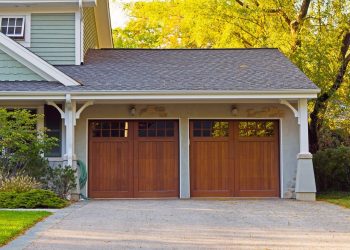You probably don’t give much thought to the types and amount of ventilation in your roof. Having adequate ventilation can protect your roof from heat and moisture damage, as well as keeping it from wearing out prematurely.
How Roof Ventilation Works
Natural ventilation doesn’t require a power source. It uses a combination of intake and exhaust vents to allow air to circulate continuously.
Intake vents are situated along the edges of the roof. They draw in cool air from outside the house. Exhaust vents are placed at ridges where two planes in the roof meet. Ridge vents allow warm and humid air to leave the house.
Why Ventilation is so Important
In hot weather, the temperature in the attic can rise. If there isn’t enough ventilation, heat on the inside of the house can cause damage to the roof sheathing and shingles. The damage can gradually progress outward.
In the winter, heated indoor air can rise into the attic and warm the underside of the roof deck. If there is snow on the roof, it can melt. Water can then run down to the eaves, which are colder, and refreeze into ice.
As that process repeats over time, ice dams can form. Water that can’t reach the gutters can seep underneath the roofing shingles, where it can cause damage. If the roof is well ventilated, warm air will escape through vents before it has a chance to melt snow on the roof, which can prevent ice dams.
If humid air enters the attic but there isn’t enough drier air flowing through, moisture can accumulate and cause damage to the roofing structure and insulation. Moisture can also lead to mold and mildew, which can affect people’s health.
How to Tell If Your Attic Isn’t Well Ventilated
You may notice one or more telltale signs that your attic isn’t adequately ventilated. Your HVAC system may work harder than usual or may need frequent repairs, or your utility bills may be rising for no apparent reason.
When you look at the roof, you may notice damaged shingles. Ice dams may form in the winter. In the attic, you may see moisture, water stains or rust on metal objects and building materials.
If members of your family have been having unexplained respiratory problems, or if conditions such as asthma or allergies have been getting worse, it may be due to mold. That may in turn be a result of inadequate ventilation.
Contact a Roofing Contractor
Some problems with your roof, such as damaged shingles, may be easy to spot. Others may be less obvious. A roofing contractor will have the training and experience to know what to look for. A professional may recommend installing one or more additional vents and may tell you that your roof needs repairs or that the attic needs more insulation.
If you’re concerned about a possible roofing problem, don’t wait to have it inspected.











